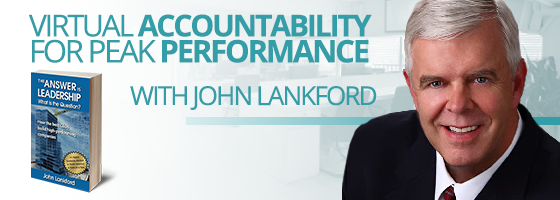IT IS NOT THE PROBLEM YOU THOUGHT IT IS
Performance, when your boss is not around, is a choice and usually an expression of people’s integrity. A common misperception is that if they are working from home, you will not get a full day’s work – that is simply not true. Your best performers will also be your best performers working from home because it is who they are. And to no surprise, your average performers will be average, no matter where they work.
Whether your employees are working virtually at home or in your office, you will consistently find they all fall into one of three categories of performance:
• Above Average /Often Exceeds: Consistently meets and often exceeds the established standards of performance. The individual performs above the established standard in either quantity, quality of work, or service to others at least 40% of the time. Completes job responsibilities with less than normal supervision and support.
• Average: Meets the established standards of performance. Consistent performer. Completes day-to-day tasks, but rarely does anything extra. Performs job responsibilities with normal supervision.
• Below Average /Unsatisfactory: Frequently does not meet the established standards of performance. The individual is unable to perform the job standard without substantial assistance. Coaching and or additional training or being written up may be required.
So what is the problem? The answer is simple, your accountability system is poorly designed and leaders do not really know how to hold people accountable.
PROBLEM 1: YOUR ACCOUNTABILITY SYSTEM IS POORLY DESIGNED
Whether working at the office or working from home, accountability is accountability. Most company’s accountability systems are unclear and leaders are now seeing its effects as their workforce navigates working from home. A company’s accountability system should line up with their priorities. Unfortunately, at most levels in the company people can not even tell you what the company’s priorities are. According to a survey conducted by Partners In Leadership, involving over 40,000 people, “85% of survey participants indicated they weren’t even sure what their organizations are trying to achieve, a missed opportunity for creating alignment and focus.” Are most of your employees busy or focused?
PROBLEM 2: LEADERS DO NOT KNOW HOW TO HOLD PEOPLE ACCOUNTABLE
Leaders do not hold leaders accountable for how well they administer the accountability system, and leaders and employees are rarely trained properly to use the accountability system the way it was intended. Continuous learning and development are not understood and developing people is a skill many managers simply do not possess.
Looking again to the Partners In Leadership survey, “When it comes to holding others accountable, 82% of survey participants say they either try but fail or avoid it altogether.” When employees are not held accountable for measurable goals and living the values of the company, poor performers are not consistently removed.
LOOKING FOR A SOLUTION?
To create effectiveness, consistency, and a clear picture of your accountability system, it must have three phases:
- Phase One: is setting expectations and yes that must start at the top of the company, this is an executive responsibility
- Phase Two: is the 10-11 months of ongoing coaching and feedback from managers to each of their direct reports and teams
- Phase Three: is the year-end review. Again, today managers dread year-end reviews and employees literally lose sleep because of how badly they hate their year-end review.
But this accountability system means nothing without leaders that are able to successfully execute and administer it. Managers will need to set clear expectations, provide the right tools, resources, have open and honest communication, provide recognition, and most importantly – hold people accountable!
Where do you start, you ask? Go ask your manager what the top three priorities are for your department or business unit for 2021. Then identify 2-3 measurable goals for each of your direct reports that is in alignment with the top 3 for your business unit. It will be a meaningful step in the right direction.
CONCLUSION
As businesses move to a work-from-home system for the foreseeable future, the job of managing employees only becomes more complicated as managers try to engage with their teams virtually. A survey by Mercer, an HR and workplace benefits consulting firm indicated that “94% of employers surveyed said their company productivity was actually the same (67%) or higher (27%) than it was before the pandemic”. Working from home is not the issue, the accountability system, and your leader’s ability to implement it is. This is fundamentally a leadership issue, imagine the potential for your company if you solved these two problems?

1 Comment